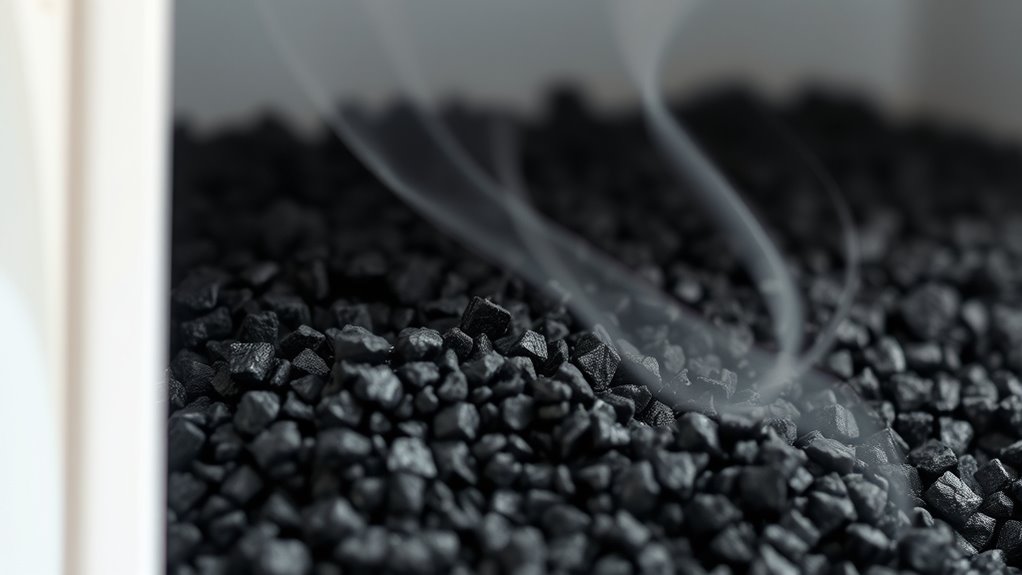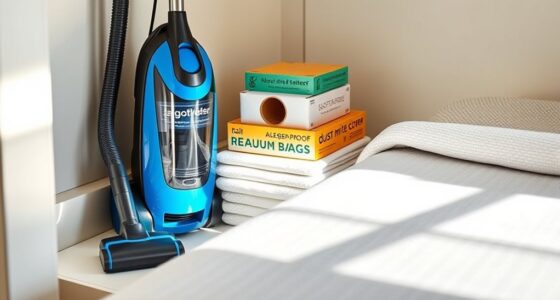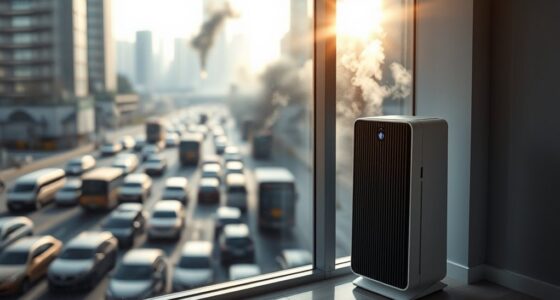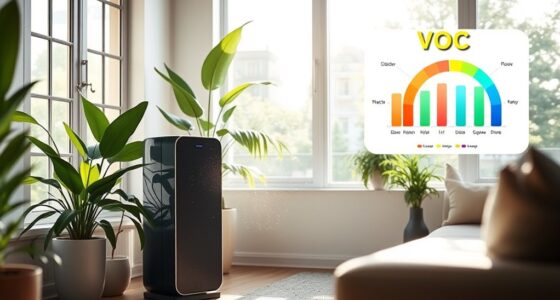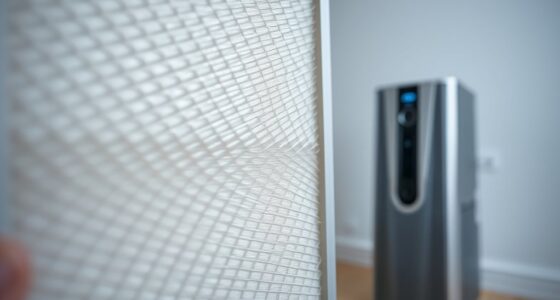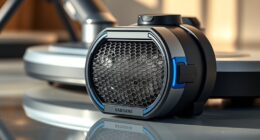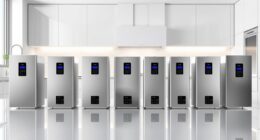Activated carbon’s role in air purification systems is essential. It effectively traps pollutants, odors, and volatile organic compounds, enhancing your indoor air quality. With its highly porous structure, activated carbon boasts a large surface area, allowing it to adsorb harmful gases like carbon monoxide and formaldehyde. This not only creates a healthier living environment but also reduces respiratory issues. If you’re curious about the specifics of how these filters work and their maintenance, there’s much more to explore.
Key Takeaways
- Activated carbon’s highly porous structure maximizes surface area, enhancing its ability to adsorb pollutants and improve indoor air quality.
- It effectively traps volatile organic compounds (VOCs), odors, and harmful gases, contributing to cleaner air.
- Activated carbon filters work through adsorption, capturing contaminants on their vast surface area, often exceeding several hundred square meters per gram.
- They complement HEPA filters by targeting gaseous emissions, creating a more comprehensive air purification system.
- Regular maintenance and timely filter replacements ensure optimal performance and longevity of activated carbon filters in air purification systems.
Understanding Activated Carbon

Activated carbon, often referred to as activated charcoal, plays an essential role in air purification systems. Its highly porous structure, created through the activation of organic materials, maximizes surface area for effective adsorption of pollutants. You’ll find that activated carbon effectively traps volatile organic compounds (VOCs), odors, and harmful gases, considerably improving indoor air quality. The micropores, typically around 2 nanometers, enhance its filtration capabilities, making it a preferred choice for filters. Additionally, activated carbon filters are particularly effective in removing odors from cooking, pets, and smoke, promoting a fresher living environment. Regular use of air purifiers with activated carbon can lead to improved respiratory health, creating a safer and cleaner living environment for you and your family. Furthermore, maintaining regular filter cleaning ensures that the activated carbon remains effective over time. Overall, many air purifiers incorporate HEPA filters alongside activated carbon to enhance their pollutant removal efficiency.
How Activated Carbon Filters Work
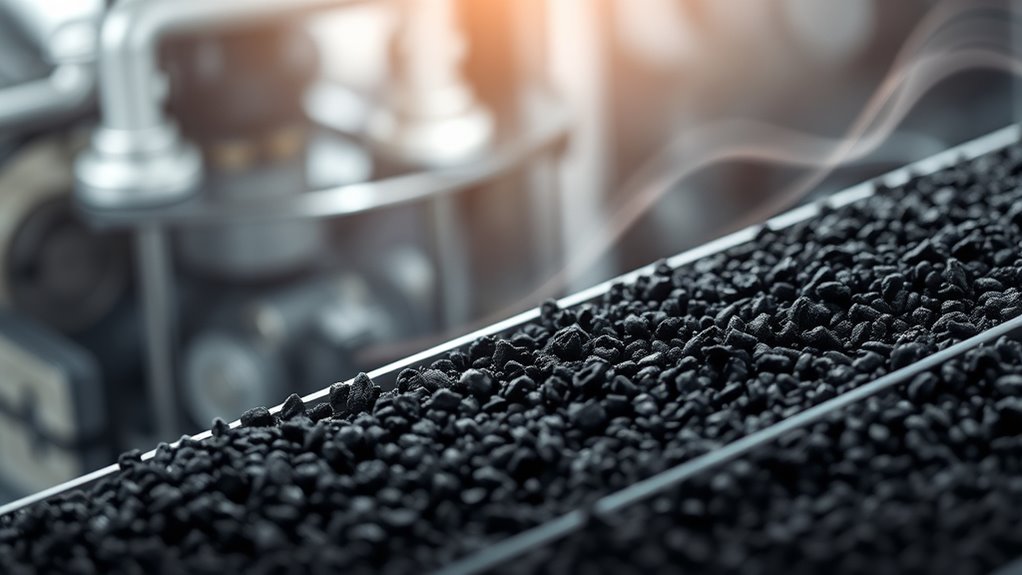
Understanding how activated carbon filters operate reveals their effectiveness in improving air quality. These filters utilize a process called adsorption, where airborne contaminants stick to the activated carbon’s high porosity surface. This surface area can exceed several hundred square meters per gram, making it efficient at trapping pollutants like volatile organic compounds (VOCs), carbon monoxide, and chemical fumes. Additionally, the effectiveness of air purifiers can be influenced by color accuracy, which plays a role in how well the system performs in various lighting conditions. Necessary cookies are used on websites to ensure these air purification systems can be effectively promoted and shared with potential users. Activated carbon filters are often used in conjunction with HEPA filtration to maximize the removal of a wide range of airborne contaminants. Furthermore, True HEPA filters are essential for capturing smaller particles, which enhances the overall purification process. Individuals using these systems should also be aware of the mental health benefits that come from improved indoor air quality.
| Aspect | Details |
|---|---|
| Material Used | Coconut shells, coal, or wood |
| Common Pollutants | VOCs, cigarette smoke, cooking odors |
| Maintenance | Requires replacement or regeneration |
With time, the activated carbon’s adsorption capacity becomes saturated, so timely replacement or regeneration guarantees ongoing filter performance.
Benefits of Activated Carbon in Air Purifiers

When it comes to improving indoor air quality, the benefits of using activated carbon in air purifiers are hard to overlook.
Activated carbon filters excel at adsorbing volatile organic compounds (VOCs) and unpleasant odors, like cooking smells and tobacco smoke. This capability considerably enhances air purification efforts.
With a high surface area, activated carbon traps a variety of gaseous pollutants, making it essential for effective air purification. These filters are also long-lasting, reducing the need for frequent replacements, which saves you money.
Additionally, activated carbon complements HEPA filters by effectively targeting gaseous emissions, ensuring both particulate matter and harmful gases, such as formaldehyde and benzene, are removed. This creates a safer environment, especially for those with respiratory issues or allergies.
Common Pollutants Addressed by Activated Carbon

Air quality can considerably suffer from various common pollutants found in our homes, but activated carbon serves as a powerful ally in combating these issues.
It effectively tackles:
- Volatile organic compounds (VOCs) from household products
- Harmful gases like carbon monoxide and formaldehyde
- Unpleasant odors from cooking, pets, and tobacco smoke
Additionally, the importance of long-term financial planning for air purification systems can help ensure that homes remain safe and healthy environments. Moreover, investing in an effective air purification system can enhance energy efficiency by improving overall indoor air quality. This is particularly crucial since air quality directly impacts respiratory health and well-being. Implementing effective air purification methods can significantly reduce predictive analytics regarding indoor air quality issues, leading to a healthier living space. Furthermore, utilizing activated carbon can also help mitigate common types of cold medications that may release harmful VOCs into the air.
Maintenance and Longevity of Activated Carbon Filters
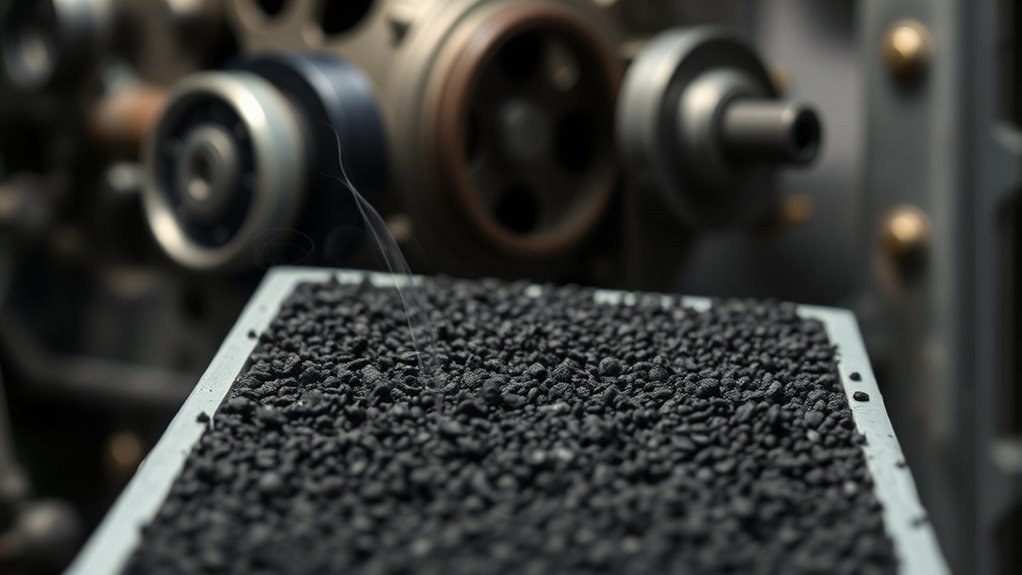
How can you guarantee your activated carbon filters last as long as possible? Start with regular maintenance, which includes monitoring for filter saturation. High humidity and fluctuating temperatures can accelerate saturation, so keep your air purification systems in stable environments. Additionally, consistent maintenance of your air purifier can prevent costly repairs and replacements. Following manufacturer recommendations for replacements—Eoleaf suggests changing filters annually for peak performance—can also enhance system longevity. Investing in high-quality activated carbon filters can extend their longevity, reducing the frequency of replacements and overall maintenance costs. Always check the filters regularly; if you notice a drop in performance, it might be time for a change. Additionally, consider using well-draining soil in your home plants to maintain optimal humidity levels in the air. Regularly decluttering your living spaces can also help improve air quality and reduce allergens, contributing to enhanced emotional well-being.
Frequently Asked Questions
What Is the Function of Activated Carbon in Air Purifier?
Activated carbon in an air purifier works by adsorbing harmful gases and odors. Its highly porous surface traps pollutants like volatile organic compounds (VOCs) and cigarette smoke, making the air you breathe cleaner.
You’ll notice a significant improvement in indoor air quality as it reduces unpleasant smells and chemical vapors from household products.
Plus, activated carbon filters last a long time, so you won’t need to replace them too often.
Why Is Carbon Used in Purification?
Carbon’s used in purification because of its unique porous structure, which creates a vast surface area for trapping contaminants.
When you choose carbon for purification, you’re opting for a material that effectively adsorbs harmful gases and odors. Its activation process boosts its ability to capture various pollutants, making it a reliable choice.
Plus, its longevity and low maintenance requirements mean you won’t have to replace filters frequently, saving you time and money.
Is Activated Charcoal Good for Air Purification?
Imagine your home as a sponge, soaking up unwanted odors and harmful gases. Activated charcoal acts like a powerful cleansing agent, drawing in these pollutants and leaving your air fresher.
It’s great for air purification because it captures up to 99.97% of airborne contaminants, especially volatile organic compounds.
With its long-lasting effectiveness, using activated charcoal in your air purifier can greatly enhance your indoor air quality, making your home healthier and more enjoyable.
What Is the Use of Activated Carbon in Filtration?
Activated carbon’s primarily used in filtration systems because it effectively traps contaminants and pollutants.
Its porous structure provides an extensive surface area, allowing it to adsorb harmful gases and volatile organic compounds.
You’ll find activated carbon in various forms, like granulated and pelletized, optimizing performance for different applications.
Conclusion
In the grand symphony of air purification, activated carbon plays the role of a master conductor, harmonizing your indoor environment by filtering out pollutants. By choosing air purifiers with activated carbon, you’re not just breathing easier; you’re inviting clarity and vitality into your home. With proper maintenance, these filters can serve you well, maintaining a gust of rejuvenating air that dances through your space, ensuring every inhale is a step towards a healthier life.
